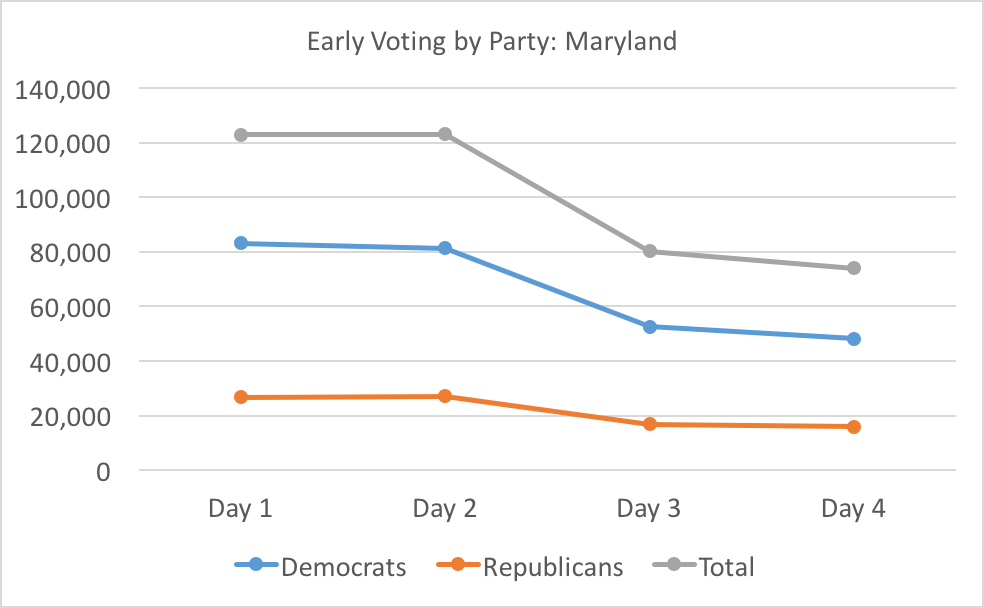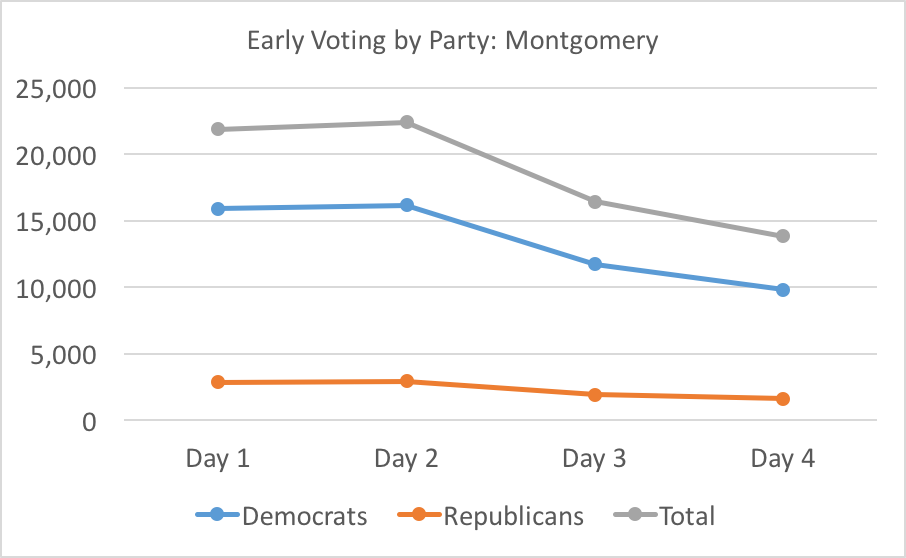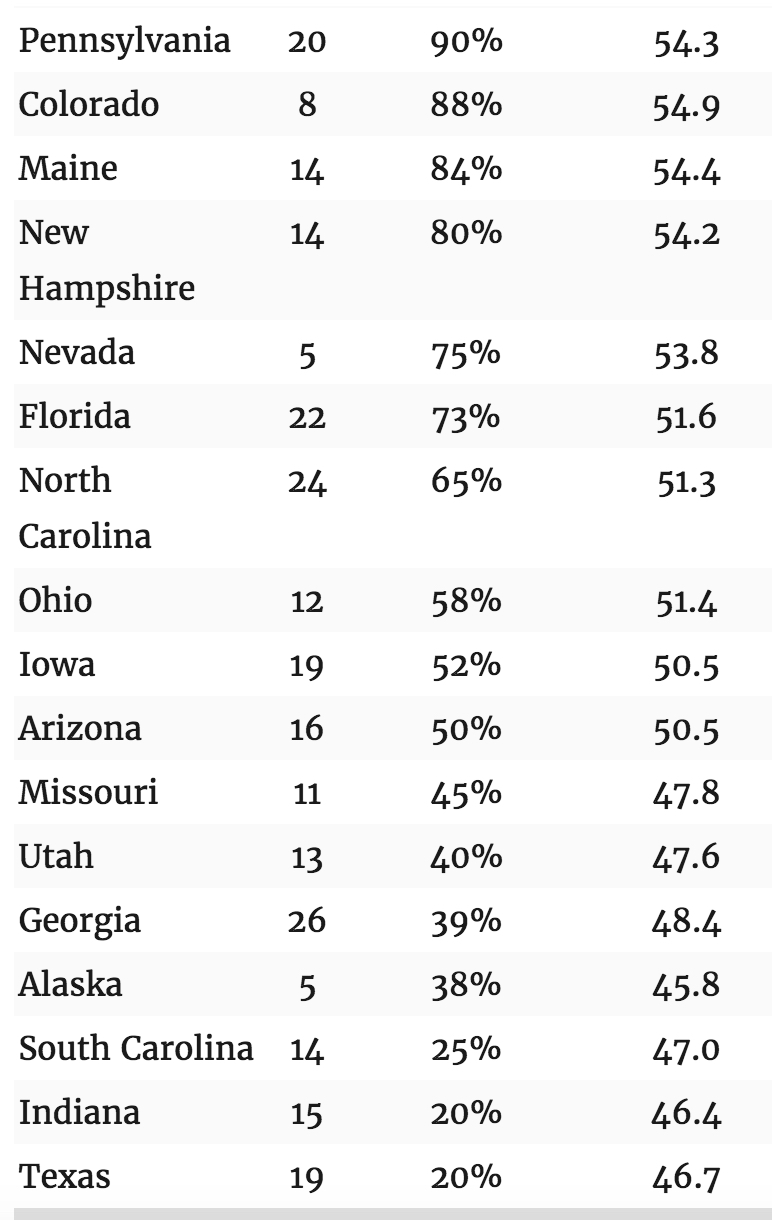 Early voting continues apace in Maryland. As in 2014, early voting dropped off precipitously over the weekend–an argument against switching Election Day to a weekend. So far, 400,235 Marylanders have voted early. This is already 93% of the people who voted early four years ago, so we will likely surpass the 2012 total today.
Early voting continues apace in Maryland. As in 2014, early voting dropped off precipitously over the weekend–an argument against switching Election Day to a weekend. So far, 400,235 Marylanders have voted early. This is already 93% of the people who voted early four years ago, so we will likely surpass the 2012 total today.
The increase is unsurprising due to the substantial increase in the number of early voting centers. Additionally, Governor O’Malley suspended early voting for two days in 2012 due to Hurricane Sandy and then extended it for two more days to make up the time.
While 10.3% of eligible voters have already cast their ballots, the rates differ greatly by party. 12.3% of registered Democrats have voted early compared to only 8.5% of registered Republicans.
The early vote is even more impressive when presented as a share of the number who voted in 2012. The 2016 early vote equals 14.6% of the 2012 total turnout. The number of Democrats who have voted early in 2016 is 17.0% of the total number of Democratic voters in 2012. In contrast, the number of Republican early voters is just 9.0% of the total 2012 Republican vote.
Despite the large gap between the parties, Republicans have improved very slightly relative to 2012, as the number of Republicans who have voted early this year is 97% of the 2012 total compared to 92% for the Democrats.
Note that all of these figures exclude absentee ballots. When I checked, the Board of Elections has not updated these figures since October 28th. As of that date, 78,299 Marylanders had cast absentee ballots. No doubt many more have arrived at the Board of Elections over the past few days.
The following graph shows that Montgomery County, the State’s largest jurisdiction largely reflects the State pattern.
 In Montgomery, 74,525 voters participated in the first four days of early voting. This equals 96% of the people who voted early four years ago, so Montgomery is performing slightly better than four years ago relative to the rest of the State (93%).
In Montgomery, 74,525 voters participated in the first four days of early voting. This equals 96% of the people who voted early four years ago, so Montgomery is performing slightly better than four years ago relative to the rest of the State (93%).
However, Montgomery still lags behind Maryland, as just 11.3% of eligible voters have voted early in the county. This includes 13.9% of registered Democrats but just 7.6% of registered Republicans. The 2016 early vote equals 12.1% of the 2012 total turnout.
Again, this masks a large partisan gap. The number of Democrats who have voted early in 2016 equals 17.0% of the total number of 2012 Democratic voters. In contrast, the number of Republican early voters is just 9.0% of the total 2012 Republican vote.



